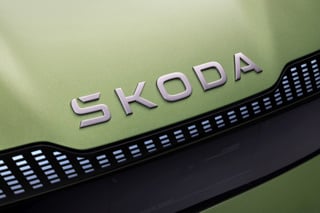The cost of hi-tech, lightweight materials is something many designers have to consider when taking a car from sketchbook to production line. However, not all designers are convinced there needs to be a wholesale shift to materials such as carbon fibre and aluminium.
Kenneth Melville, design director of Renault and the man with overall responsibility for the new, rear-engined Twingo, says: “Engineers now use digital design to calculate crumple zones in a more intelligent way than we used to. This makes the most of the materials we already have. Economies of scale mean large carmakers can spread the cost of expensive materials, but there has to be a tangible benefit to using a more expensive replacement.”
Rather than looking to exotic materials, such as carbon fibre, Melville says the emphasis on saving weight in the Twingo centred on areas such as the all-glass tailgate. He acknowledges weight and emissions concerns are ever-present, but says aerodynamics is a growing area in designers’ thoughts.
The conflict between designers who want to make a car as sleek as possible and the reality of making it practical inevitably leads to compromises.
Ward cites a discussion between his design department and the engineering side about the positioning of the front suspension top mounts in a recent design.
“Ideally, the designers wanted a much lower front profile, while the engineers preferred the perfect technical solution. We speak to each other, work out where we can make changes and deliver a viable end result that works for everyone,” he says. Burkle thinks this kind of situation will disappear as design, engineering and production departments merge. He is an advocate of small teams of relevant people, who work closely together from start to finish on a project.
This will be a key approach as aerodynamics and the management of airflow over and under a car are improved. Some examples of this can be seen in the BMW 4 Series range, where air enters through the front side grilles and is then directed around the front wheels and down the sides of the car.
The challenge for designers is to incorporate this aero management while still making the car look appealing. Mercedes-Benz’s Ulrich Baur, exterior designer of the GLA, says most cars need large front air intakes to cool the engine, but these can pose problems with smooth airflow.


















Login to comment
Comments
No comments have been made yet.